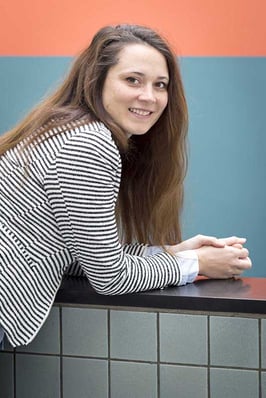The Gemeentemuseum Den Haag [City Museum of The Hague] yearly organises dozens of event events. These are not just exhibitions openings, but also meetings for other (external) groups. In this interview, Iris de Jager (event manager at the Gemeentemuseum) talks about how events help to sustain and expand the museum’s network. She explains why growing and strengthening the network is so important for the museum.
Openings and commercial events

“The museum had to be accessible for everyone, according to Berlage. We want to hold on to that approach. Every year, we organise at least 35 exhibitions, all of which worthy of a festive opening. Some them are aiming to reach a new target audience. Our annual fashion exhibition, for example, attracts a people from outside our main target audience. The amount of commercial and non-commercial events we organise is more or less the same. Shell, NN, KPN and Ministries, are examples of commercial clients we have.”
Museum as a meeting place
The Gemeentemuseum presents itself as a true meeting place. From the Mondriaan Business Club to a club for young professionals: the museum wants to connect like-minded people and organises events to facilitate this. “We want the museum needs to be a meeting place - a place that takes you to the next step. In addition, our exhibitions and other projects are possible because we make extra money, renting out the location commercially.”
Read how the YoungCapital festival connects employees here
“We are happy to organise events for our private contributors and special relations too. An example of this is our annual Contributors Dinner, where our invitees enjoy a dinner in the Tuinzaal, together with other museum enthusiasts, the management and employees. During these receptions we offer our guests an exclusive tour or a ‘look behind the scenes’, so that people get to experience the richness of the art collection of the Gemeentemuseum The Hague.”
Events ensure connection with the network
According to De Jager, the objective of non-commercial events is to appeal to new and existing target audiences. “It is a form of relationship management: establishing new connections and securing existing ones. To reach this objective, we invite members of the Fund Gemeentemuseum, friends and many other relations for openings, exhibitions and other programmes. This creates more involvement and sympathy for the museum.”
“Our exhibition Glans en Geluk [Shine and Happiness] was about art from the Islamic world. With our very extensive programme, we illustrated that we are a museum for everyone in the city of The Hague. We worked together with people from different backgrounds: from a TV chef to an emerging writer. It made the theme come to live and we reached more diverse target audiences.”
Relations are necessary
The event manager emphasizes the importance of a strong network. “Our relations are our ambassadors. You need to be visible on various digital channels, of course, but more important is that people experience the museum and share their experiences. We organise events to involve the network of the museum as much as possible. I even dare to say that running a without a proper network is is nearly impossible.”
A good Marketing and Communication strategy ensures visibility, which helps attract people to the museum. “Nevertheless, you shouldn’t underestimate relationship management with tourism organisations and cultural representatives. Once again: successful organisations maintain their relationships, be it a visitor or a different kind of relation: the on- and offline experiences should reinforce each other. This is the only way to make your relationships flourish.”
Momice enables relationship management
The Gemeentemuseum has been using Momice software for invitations and registrations for 5 years now. “We were not using a registration system before, so the process was very time consuming. Thanks to Momice, we can now give a digital impression of what to expect in the museum in the invitation and on the website. This helps to engage our audience. As an organiser, it is important to know whether someone will attend or not. Momice gives us a clear overview, including special wishes such as dietary requirements. It is also easier to communicate complexer events with multiple components.”
De Jager says many of her colleagues are used to the clear format of the software. “As a result, it is easier to send a reminder or share additional information. The surveys afterwards are also very helpful: it tells us what can be improved or done differently the next time. It gives us more insight in the needs of our relations. The invitations always look good and the software is user-friendly. Relationship management can be difficult sometimes, but Momice really helps us.”
Conclusion
The Gemeentemuseum in The Hague is more than just a museum: it clearly positions itself as a meeting place. The museum actively puts an effort into building and strengthening relationships – and events play an essential role in this. Momice makes managing relations easier, and thus contributes to the future-proofing of the organisation.
